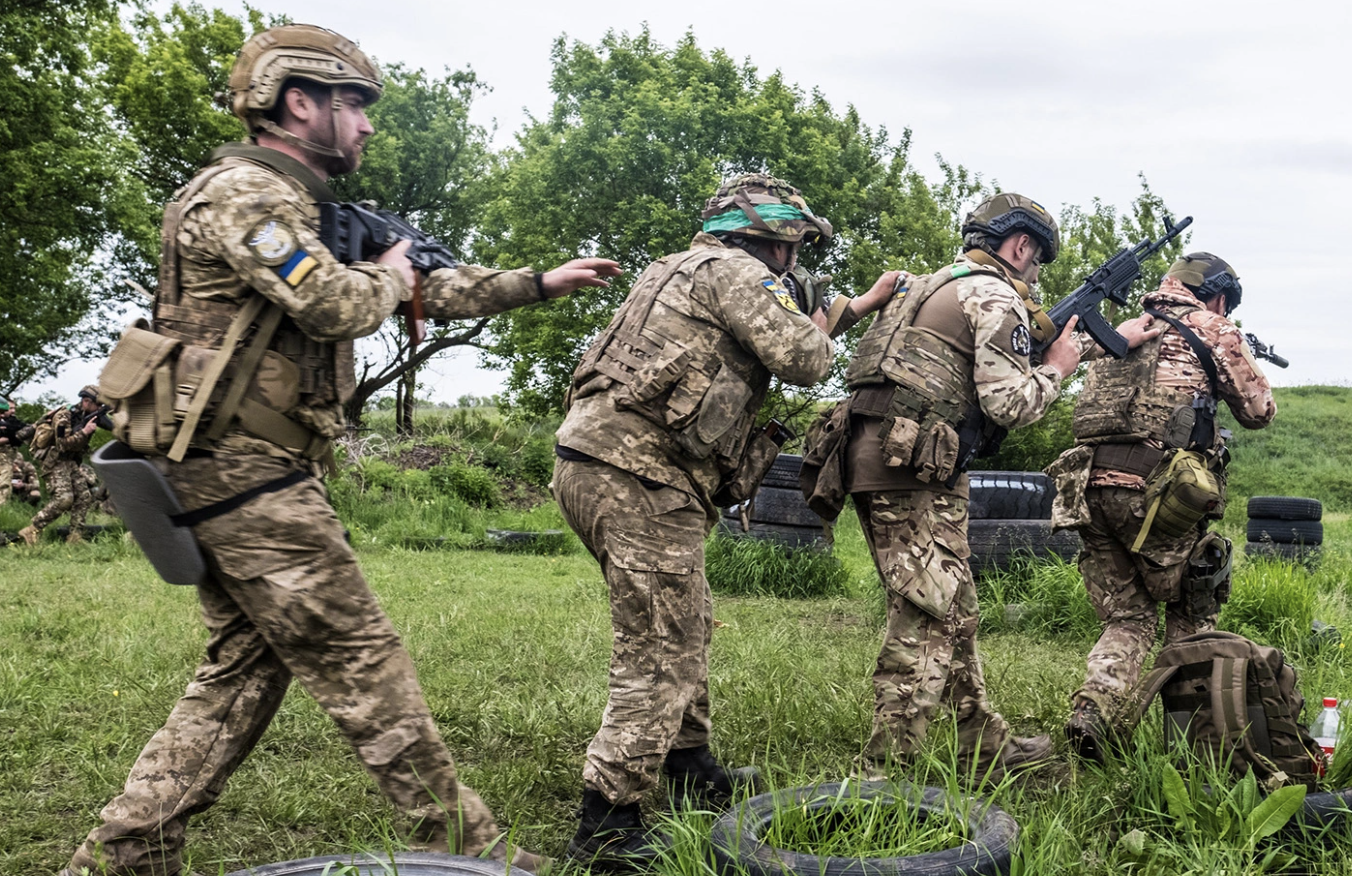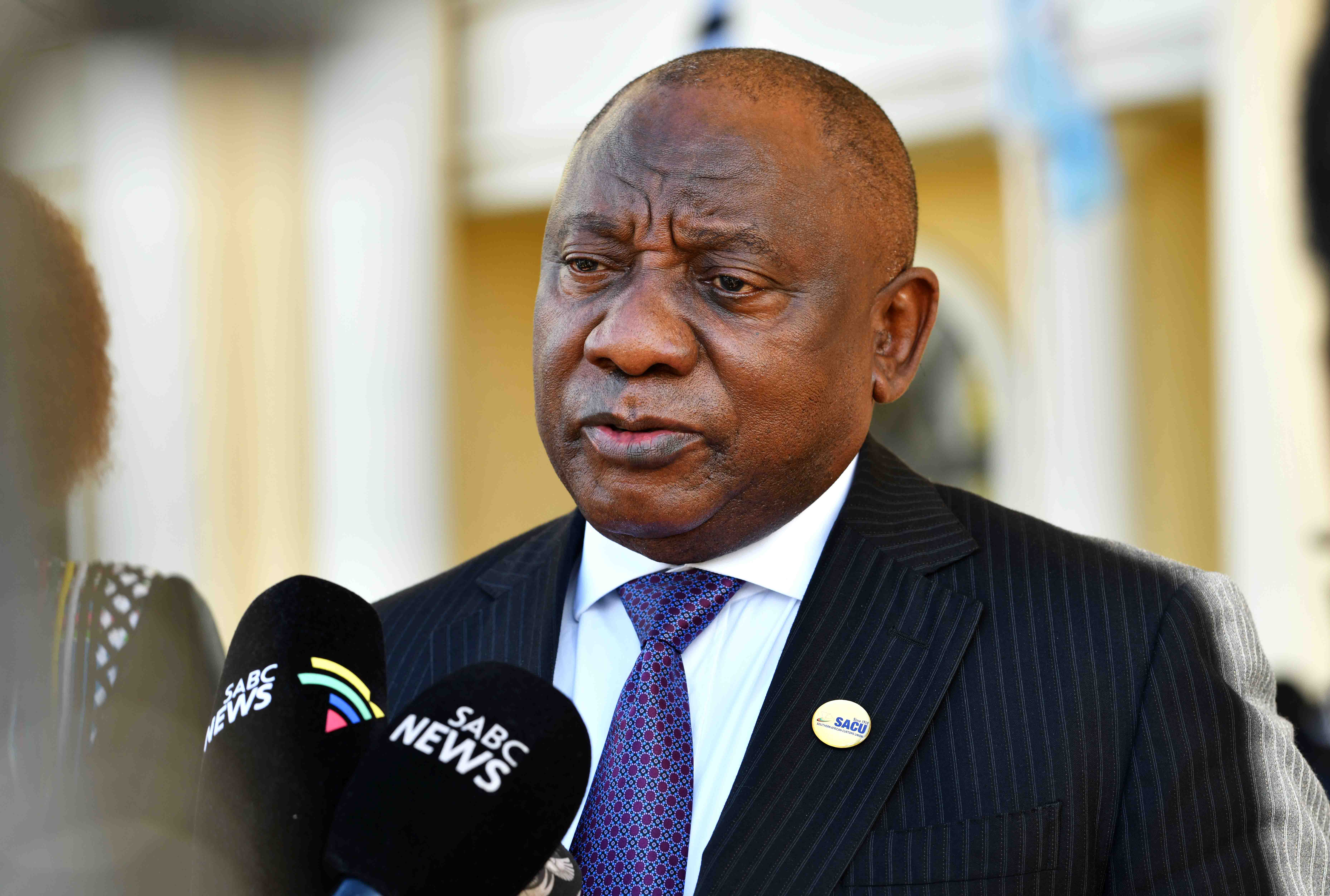News
‘This is my Land’ – Putin’s Great Military Miscalculation
Sergei, the Ukrainian lieutenant-colonel commanding the 113th Territorial Brigade, looked tired. He had reason to be.

Sergei’s unit had just been pulled out of Bakhmut, the administrative centre of the Donetsk Oblast. A battle for control of the city has raged since August 2022 with Russian forces, led by the Wagner Group. Moscow has viewed the city as a strategic route in opening up access to attack the Ukrainian-controlled cities of Kramatorsk and Sloviansk in Donetsk.
In the process, the fighting has turned the city which once housed more than 70,000 people – in Ukrainian president Volodymyr Zelensky’s words – into “burnt ruins”.
The 113th Territorial Brigade lost nearly half of its strength as casualties – dead and wounded – in Bakhmut. Its deputy commander, Vitali, a young major trained as an aviation engineer, joined the army in 2013 just before the Russian annexation of Crimea and parts of the east.
He said it took a “day or so” to adjust to the intensity of the shellfire.
Cradling his state-of-the-art Malyuk assault rifle, he says proudly, “We are a totally different army to what we were in 2014” at the time of the Russian annexure of Crimea and parts of the Donbas.
At the start of the war on 24 February last year, just the commander and “two or three others” had combat experience. Today, Sergei grimaces, “everyone except the rookies has seen combat”.
These rookies were being put through their paces in a live-fire exercise under the watchful eye of regular non-commissioned officers at a remote rural facility north of Kharkiv, less than 20km from the Russian border.
Economists, psychologists, mechanics, drivers and students make, it seems, excellent if unlikely soldiers when properly motivated and trained.
Six phases
The Ukrainian army has adapted and matured through six phases of the conflict over the past 462 days.
First was the initial invasion, resulting in the battles for Kyiv, Sumy and Kharkiv (all of which resulted in Ukrainian victories) and the Russian overrunning of the south, notably the cities of Melitopol and Kherson. This stage was notable for the Ukrainian development of a “mosquito” strategy, using anti-tank weaponry to frustrate and ultimately turn the Russian advance and disrupt its lengthy and consequently chaotic logistics lines.
Moscow lost the battle for Kyiv on the first day of the war in an overzealous assault on Hostomel airport to the northwest of the city.
This cargo airport, military base and production facility for Antonov aircraft, just 25km from downtown Kyiv, was supposed to be the principal staging ground and logistics hub for a Russian thrust into the capital. By quickly removing, capturing or killing President Volodymyr Zelensky and key members of his team and installing a puppet leader, Putin hoped to end the war in a single bold stroke.
The Russian strategy appeared to hinge on several presumptions: That the West was weak and unlikely to intervene; a view presumably cemented by the retreat from Afghanistan just six months earlier. That the long streams of Ukrainian refugees from the east – more than five million – seeking sanctuary in the western parts of the country or in Europe itself, would add to the confusion, testing Ukrainian resolve and complicating any response. That a hasty collapse of Zelensky’s government would trigger disarray in Ukrainian units fighting in the east and the south, resulting in an overall surrender.
There were other costly miscalculations. That Russia would not – or could not – launch a massive opening air strike to soften up Ukrainian defences on the scale of what the US and its allies had carried out on Baghdad in 2003. Instead, while the Russians peppered strikes on airfields and other military and communications targets, it simultaneously moved with its ground forces which, given the wintery conditions, stuck to the roads, making them relatively easy targets.
Presumed welcome
And the presumption that the Russians would be welcomed in certain places as liberators grossly underestimated the feelings of antipathy towards them, even among Russian-speaking Ukrainians. Putin seemingly believed his own nonsense about Ukraine being a fake state hijacked by a small, “Nazi” elite, and that, consequently, the entire edifice would quickly collapse. This was the original and cardinal error.
As a result, Moscow spread its forces relatively thinly across a wide front, forgetting a fundamental principle of warfare – the need for concentration of effort. Their forces, too, numbered just 200,000, compared with the 2003 coalition invasion force of 650,000 in Iraq.
While the Russians did launch air attacks on Hostomel and eventually took the airfield, the resistance of the Territorial Defence units not only caused some 200 casualties among Russian Spetsnaz troops, but delayed their advance into Kyiv, allowing the Ukrainians time to blow up bridges and shore up their defences.
More than that, it showed the world Zelensky and his government were going nowhere, a realisation underlined by his now-famous comment: “The fight is here; I need ammunition, not a ride.”
Even though Russia finally secured the airfield, its forces remained under constant fire, preventing the landing of large transports to create the anticipated Russian air bridge. And as the Russians got bogged down, they were picked off by Western-supplied Javelin and NLAW anti-tank missiles, along with their own Stugna system.
Kharkiv, a city with a Russian-speaking majority, may have seemed like an easy prospect for the Russians who outnumbered the Ukrainian army five-to-one with a strike force of 20,000 massed on the border.
But deploying what they had at their disposal, using armoured personnel carriers against tanks, for example, the Ukrainians were able to blunt the Russian assault which petered out after destroying much of the housing infrastructure of the suburbs around Saltivka, just 40km from the Russian city of Belgorod.
Unmanned warfare
Vitali is a lieutenant in a drone regiment. Before the war, he was a civil engineer. His colleague, call-sign “Kan”, was an IT specialist and DJ.
When the war broke out “we picked up rifles and went to defend Kharkiv”, says Vitali. “The Russians made a simple error in travelling in long convoys. We knocked out the first and last vehicles and picked them off one by one with anti-tank missiles.”
Putin’s actions have catalysed Ukrainian nationalism.
As the mayor of Kharkiv, Ihor Terekhov, puts it, “If they had done their homework, they would have realised that things changed after 2014 and that the people were not sympathetic. While we may sometimes speak Russian, mentally we are Ukrainians.”
The second stage was the Battle for Mariupol, which was besieged by Russian forces; the Ukrainian garrison at Azovstal finally surrendered in May 2022, but not until much of the city of 450,000 inhabitants had been levelled.
A third is the ongoing fight for the control of the Donbas, which has so far been a draw, including the current Battle for Bakhmut.
Fourth is the counter-attack by Ukrainian forces in September, resulting in the recapture of Kherson in the south and Izyum in the northeast that same month, along with Vovchans’k and Kupiansk.
In meeting stiff military resistance, the Russians have turned their attention to terrorising the civilian population through indiscriminate drone and missile attacks on urban centres. This tactic has, in turn, been blunted by a layered and increasingly sophisticated Ukrainian gun and missile defence.
Inevitably, the Russian tactics have improved, not least in Bakhmut, for example, with extensive use of gas and flamethrowers to clear out buildings. Other lessons including jamming and spoofing the airspace to hinder the use of drones, which have helped Ukraine level the odds on the battlefield.
Kan and Vitali demonstrate their drones’ capabilities at a civilian aerodrome outside Kharkiv; junior sergeant Kan displaying the gaming skills he picked up on War Thunder by dropping a bottle of water precisely on its target. He also studied a 1968 pilot’s targeting guideline to translate his civilian skills into military use. The laws of physics, he says, remain the same.
Members of a volunteer organisation known as “Hell’s Kitchen” work in a nondescript flat in Kharkiv developing drones, relying on crowdfunding for the development of new systems.
Igor, with a PhD in radio-physics, and Andriy, a researcher in the same field at Karazin Kharkiv National University, are focusing on building systems to counter jamming, carry out Sigint radio interception and signal detection, and develop demining and combat ground drones.
Russia, too, has realised the huge advantages presented in unmanned warfare, setting up a reported 80 schools for training and “producing thousands of drones”.
There is a debate, however, over the efficacy of hardening drones against jamming and increasing the capacity overall to attack electronic warfare systems, enabling drones to fly unmolested.
Other things, too, remain the same, including the reliance on artillery and the indiscriminate use of airborne attacks on urban centres.
War crime evidence
On the outskirts of Kharkiv is a “missile cemetery” where the Ukrainians store the evidence of more than 1,000 missile attacks on civilian targets in the city, and a reported 15,597 cases of violations of the Geneva Convention.

Neatly laid out are rows of the remains of Iskander short-range missiles, Kha-55, Smersh 240mm, Tornado 300mm, Grad 122mm, cluster munitions and Kalibr cruise missiles. The Russians are also employing ground-to-air S300 missiles in the ground-to-ground role, and the hypersonic Kinjal, along with hundreds of thousands of artillery rounds – as many as 20,000 per day in Bakhmut.
The fifth stage was the start of mini-incursions by Russian dissidents across the border from Ukraine, drawing Russian forces away – such as the recent attack into Belgorod across the border from Kharkiv. Two groups operating in Ukraine – the Russian Volunteer Corps and Freedom of Russia Legion – claimed responsibility.
Counter-offensive
And the sixth stage is where we are now, on the cusp of a Ukrainian counter-offensive, likely to push west from Kherson and south from Kharkiv.
Ukraine has learnt many lessons on the way, perhaps most importantly that it could withstand the more numerous and better-armed Russian army. This has given them the confidence to keep fighting.
The leader of Russia’s Wagner mercenary group, Yevgeny Prigozhin, has publicly admitted that Moscow’s plan to “demilitarise” Ukraine with its invasion has failed. Instead, 15 months after the invasion, he said the West has not tired of the war or backed off its support of Ukraine.
Prigozhin admitted that Russia’s military leadership had “f**ked up” many times during the war, leading to heavy troop losses, including some 20,000 Wagner troops during the fight for Bakhmut.
“Ukraine’s army now has a high level of organisational skills, a high level of training, a high level of intelligence. They have different types of weapons and, what is most important, they can easily and successfully work with all systems – Soviet, Nato systems, you name it,” he said.
“As for demilitarisation… they had, say, 500 tanks at the start of the special operation, now they have 5,000 tanks. They had 20,000 people who could fight back then, now 400,000 can. In what way have we demilitarised it [Ukraine]? It turns out we did the opposite – we f**king militarised it,” he said.
Morality and morale
Some of the lessons are less about technology than morality and morale.
In 1942, the Sonderkommando of Einsatzgruppe C led thousands of Bakhmut Jews into a mineshaft where they shot into the crowd. The Nazi soldiers then bricked up the entrance to the tunnel. As many as 3,000 people died of suffocation.
Now Bakhmut has effectively been removed from the face of the earth.
At the G7 summit recently held in Hiroshima, Zelensky said the images of nuclear destruction in the Japanese city reminded him of what had happened in Bakhmut.
Kharkiv, too, has seen more than its share of fighting, with four battles for the city between 1941 and 1943, resulting in the destruction of 70% of the city. By the time of Kharkiv’s liberation in August 1943, the surviving population was shrunk from 1.5 million to under 200,000. Now it adds two further battles to that sad tally.
Fighting spirit also remains crucial, reminding of Napoleon’s aphorism that “in war, the moral is to the physical as three is to one”.
Sergei, the commander of the 113th, draws heavily on his cigarette before saying that there is no option but to carry on until Ukraine prevails.
As surveillance drones hum overhead, he adds, oblivious to the light shower of rain, “I am from Kharkiv. This is where I live. This is where my family and relatives are. This is my land.”
This article originally appeared on the Daily Maverick
Photo: Richard Harper


